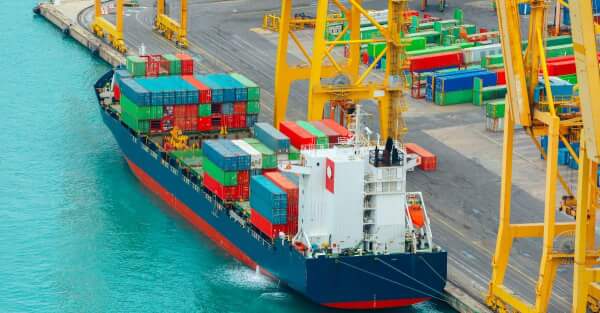Importing from Spain to the UK: Complete Business Guide
Read our complete business guide on importing from Spain to the UK, covering everything from customs to shipping methods.

Planning to do business in Italy? If you’re a UK company selling to or working with Italian clients, you’re going to need to know about e-invoicing. It’s mandatory for B2B transactions in Italy, so it’s essential to get to grips with it.
In this guide, we’ll run through everything you need to know about Italy e-invoicing requirements. This includes what the invoicing system is in Italy and how it works, plus the answers to some commonly asked questions about it.
And if you need a cost-effective and fast way to get paid by your overseas clients, take a look at the Wise Business account.
With this powerful online account, you can receive international payments in multiple currencies, including Euros,, without the complexities or costs of using a bank.
💡 Learn more about Wise Business
Electronic invoicing (e-invoicing) is the exchange of a digital invoice document between supplier and purchaser. In this system, everything is done through automatic and electronic processing, in contrast to paper-based invoicing.
In Italy, e-invoicing is mandatory for B2B transactions between private businesses.¹ This means it may apply to you if your company is trading with an Italian business.
The legislation was introduced by the Italian tax authorities in 2014, initially only for sales to government bodies. The requirement was extended to other businesses and transactions as of 2018.¹
All e-invoices must be submitted to the Sistema di Interscambio (SdI) digital platform, so that taxable transactions can be verified by the Italian tax authorities in real time.¹
There are penalties for non-compliance with the new system, so businesses could have to pay anywhere between 90% and 180% of the VAT due.¹
If a business is required to submit electronic invoices, they must issue them through the Sistema di Interscambio (SdI) e-invoicing platform. Invoices must be submitted in XML format, and can contain a digital signature for extra authenticity. The SdI system then approves the invoice and submits it to the customer.²
To use the system, it’s necessary to be registered with the FatturaPA web interface. You can do this if you have an Italian branch of your company (an employee there can register on behalf of the company) or you can use an access point provider to submit invoices through the system.²

The e-invoicing system in Italy primarily applies to VAT-registered businesses which are based in the country and trade with each other. So if your company has a branch or subsidiary in Italy, you’ll need to comply.
However, it could also affect UK-based businesses who sell goods and services to Italy.
New rules came into force in July 2022 making it mandatory for international companies to comply with e-invoicing rules if they carry out cross-border transactions with an Italian-registered company.²
This means that if you want to trade with your Italian clients, you’ll need to get to grips with the SdI system. You’ll also need to submit invoices in the FatturaPA (XML) format.
Here’s a quick checklist of key requirements relating to Italy’s e-invoicing system:
- You must register with the FatturaPA web interface, or use an access point provider of Enterprise Resource Planning (ERP) software
- Invoices must be submitted to the SdI system, not sent directly to the client
- Invoices must be in XML format
- Digital signatures can be in either of these two formats: CAdES-BES (CMS Advanced Electronic Signatures) and XAdES-BES (XML Advanced Electronic Signatures)²
You can find full details of what else is required on the Fattura PA website.
Still have questions about Italy e-invoicing rules and requirements? Take a look below.
Electronic invoicing for businesses became mandatory in Italy in 2019. The rules were expanded to include international companies trading with Italian-registered businesses in 2022.
Country-specific rules like this were prompted by the European Union (EU) introducing its own legislation in 2014 - called ‘Directive 2014/55/EU on electronic invoicing in public procurement’.³
All electronic invoices in Italy must be submitted in the appropriate XML format, as specified by the FatturaPA requirements. A digital signature should also be provided to guarantee the authenticity of origin.⁴
The ‘Directive 2014/55/EU on electronic invoicing in public procurement’ was introduced by the EU in 2014. It required all public sector bodies within member states of the EU to accept e-invoices. It also stipulated that e-invoices should comply with certain standards, including the use of electronic signatures.³
An e-invoice is a digital version of an invoice document, which is submitted and processed electronically. A standard invoice is usually in paper form, and requires manual processing and filing.
Wise Business can help your company get paid by customers in multiple currencies, with low fees and the mid-market exchange rate.

Your Wise Business account comes with local account details to get paid in major foreign currencies like Euros and US Dollars just as easily as you do in Pounds.
All you need to do is pass these account details to your customer, or add them to invoices, and your customer can make a local payment in their preferred currency. You can also use the Wise request payment feature to make it even easier and quicker for customers to pay you.
Get started with Wise Business 🚀
After reading this guide, you should have a better idea of what to expect when invoicing a client in Italy from the UK.
We’ve looked at the rules and requirements for e-invoicing in Italy, including what you need to do as an international business trading with an Italian business.
The difficult part will be to get registered and learn how to use the SdI system. But after that, you may find e-invoicing to be simpler, faster and more efficient than traditional invoicing methods.
Sources used for this article:
Sources checked on 29-04-2024.
*Please see terms of use and product availability for your region or visit Wise fees and pricing for the most up to date pricing and fee information.
This publication is provided for general information purposes and does not constitute legal, tax or other professional advice from Wise Payments Limited or its subsidiaries and its affiliates, and it is not intended as a substitute for obtaining advice from a financial advisor or any other professional.
We make no representations, warranties or guarantees, whether expressed or implied, that the content in the publication is accurate, complete or up to date.

Read our complete business guide on importing from Spain to the UK, covering everything from customs to shipping methods.

Read our complete business guide on importing from Türkiye to the UK, covering everything from customs to shipping methods.

Is Tide Bank safe? Find out everything you need to know about Tide Bank business account security here.

Is Revolut Business safe? Find out everything you need to know about Revolut UK security here in our helpful guide.

Read our helpful guide on how to start a business in Romania from the UK, including info on company formation, legal entity types and required documents.

Read our helpful guide on how to start a business in Lithuania from the UK, including info on Lithuania company formation, legal entity types and more.